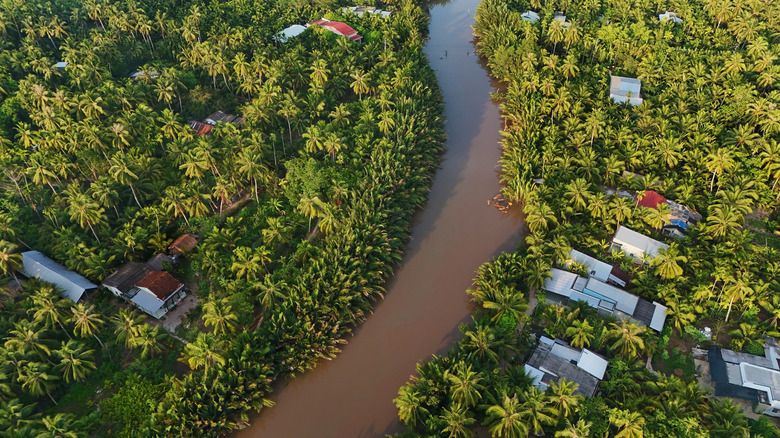How You Might Actually Be Eating Swai Fish Without Knowing It
Overfishing, illegal fishing, longline fishing, ghost fishing, bottom trawling, bycatching, depletion of fish stocks, ocean waste, and even human rights abuses — that's just the beginning of some of the issues faced by the commercial fishing industry today. While we can be aware of certain fish that we ought to think twice before buying, most consumers' concerns come down to what ends up on their plates. And not only are a lot of fish populations shrinking in both population and physical size (which can mean you're paying more for less), as has been seen in the case of Alaskan King salmon, but many fish in restaurants are not always what they say they are.
A study conducted in 2016 by the Department of Nutrition, Food & Exercise Sciences at Florida State University and published in the journal of "Food Control" found that nearly a quarter of fish served at restaurants were mislabelled and were actually swai fish — and upwards of 66% labeled generally as "fish" were swai fish, too. How does that happen? Well, the problem goes back further than the restaurant. In fact, they may not even know. Mislabelling and fraud has been a long found issue in the U.S. seafood supply chain and beyond, stemming from a broader global issue tied to a lack of transparency and accountability, amongst other problems.
Known as a "seafood fraud," Oceana's 2014 global fraud report found that one in five seafood samples around the world are mislabeled, with mislabeling found at every stage in the supply chain. So, you could be eating a lot more swai fish than you think.
What is swai fish, and is it healthy?
Swai fish, also known as pangasius fish, are commonly imported from fish farms in the Mekong Delta in Vietnam — the largest freshwater fish farming industry in the world. Swai fish are white fleshed and firm, with a neutral flavor that makes it easily passable as other varieties of white fish. Aside from the higher likelihood of contracting disease that is common among all types of farmed seafood, swai fish is listed as a fish to avoid by the Monterey Bay Aquarium Seafood Watch for using high amounts of chemicals and antibiotics that pose a high risk to the environment.
Mercury contamination is another possible concern, with a 2015 research study published in the journal of "Food Science and Nutrition" finding that the levels in 50% of swai exceeded the World Health Organization's recommended limit. But, aside from that, consuming swai isn't any more or less healthy than any other variety of fish, delivering good amounts of protein, omega-3s, selenium, niacin, and B12. However, according to a 2016 study published in the journal "Environmental National" those nutrients can vary depending on feed — which for farmed fish can include anything from rice bran and soy to canola and fish by-products.
If you want to avoid eating swai fish for any reason, don't order any of the fish it's most commonly mislabeled as, including perch, grouper, and sole. Although Oceana's 2014 fraud report found it was sold as up to 18 different types of fish.

